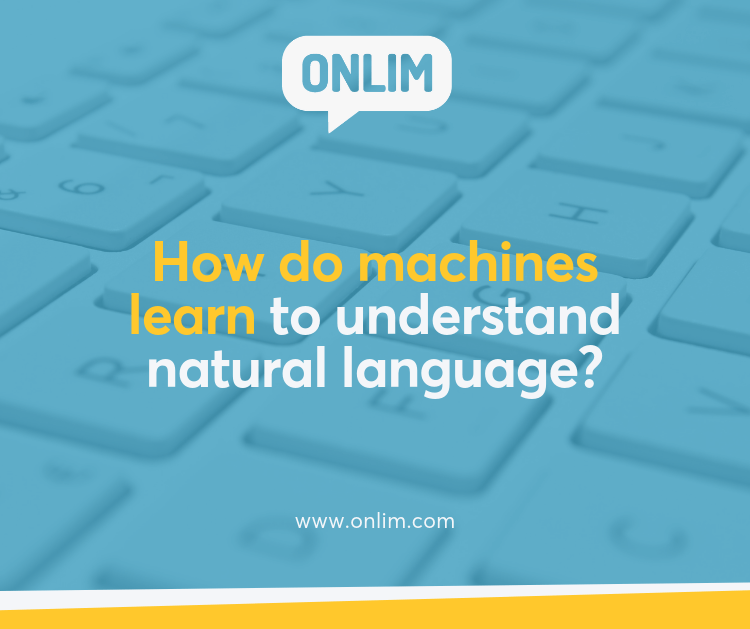How Do Machines Learn To Understand Natural Language?
In the 90ties machine learning has been described by Arthur Samuel as a computer’s capacity to learn independently, without the need for added code through human input.
A computer or algorithm is learning based on its own experiences whilst processing specific tasks. With added repetitions and/or new data, new improvements, solutions, and actionable paths are being discovered by the machine itself. The application of these innovative inputs builds an important foundation for Artificial Intelligence (AI).
One of the most fascinating fields of machine learning deals with communication. More specifically, the way computer systems and humans can interact and communicate with each other using natural language.
The underlying process is called Natural Language Processing (NLP) and aims to tackle the task of teaching computers how to understand and use human language.
Use Cases for Natural Language Processing (NLP)
Voice and text commands are embedded in a multitude of different applications. Some of the most advanced and famous ones can be found in:
- Language applications as in translation apps like Google Translate
- Spellcheckers as known from MS Word or the Grammarly app which are using NLP to look for grammatical errors in written texts
- Interactive Voice Recognition which is often used in call centres enabling callers to make choices
- Voice assistants like Alexa, Siri or Google Assistant that are enabling many different functionalities on smartphones and in the home environment
- Automated chatbots that are being used in addition or substitution to customer service agents
How does Natural Language Processing work?
Use cases for Natural Language Processing are numerous. But how does the processing of natural language actually work?
NLP can generally be divided into three main aspects:
Voice recognition: Processing of spoken words into machine readable text
Understanding natural language: A computer’s capacity to understand what a human is saying
Formulating natural language: The individual generation of natural language by a computer system
Through combining syntactic and semantic techniques for analyzing text, computers can gain access to a deeper understanding of spoken words. Syntactic describes the grammatical structure of a sentence and semantic the meaning conveyed by it.
By utilising syntactic analysis, natural language is being parsed for its validity concerning formal grammatical rules. Words are not being taken into consideration individually, but in groups and the way they relate to each other.
A semantic analysis deals with understanding, deciphering meaning and the interpretation of words and sentence structures. This is how a computer is able to process natural language.
It has to be mentioned that this is still one of the most challenging aspects of machine learning, as even we humans needed thousands of years to develop our differentiated linguistic systems.
A typical interaction between a NLP system and a human:
- Human talks to the machine
- Machine records auditive signal
- The audio signal is being converted into text
- The text is decoded syntactically and semantically to be analysed
- Evaluation of responses and possible actions
- Processing of data into action as audio or text signals
- Communication in-between machine and human through the use of language and text outputs
Limitations to the development of Natural Language Processing
As humans, we are using language without a second thought because we have been programming our very own language computer in our brains from a young age onward. This process is quite complex as it works with a vast array of different signs, symbols and meanings.
Our language centers are consistently engaged even when we have a single thought and our acoustic understanding is a highly evolved multi-sensual effort.
That’s why simply understanding human language is quite an arduous process. Words can be combined in infinite ways and have a different meaning depending on the context they are being used in. In many cases, the information delivered through context is culturally conditioned adding even another layer of meaning that needs to be deciphered by a machine.
Language is very malleable and broad in its possible meaning and computers still have to learn how to process all the different informational layers. Ultimately computers will need to learn to make sense of all the information that is available on the internet to create a truly independent artificial intelligence.
Deep learning as the base for Natural Language Processing
The development of Voice Recognition heavily relies on Deep Learning. Combining the process of Deep Learning and NLP enables a deeper understanding of language data for machines that gives more clarity about words and their relational meaning.
Get weekly updates, tips and tricks just like that into your inbox.
With Deep Learning, language is continually analysed and new insights on language structures are gathered. Complex neurological networks can be built on this input and enable future automation of artificial intelligence.
We haven’t quite reached this stage yet, but even today’s AI-solutions are able to improve independently by analyzing data. Processes are simplified and improved, quite often with very innovative approaches.
Retrieval Augmented Generation (RAG)
July 10th, 2024|
Is a voicebot right for my company?
June 18th, 2024|
What is Generative AI?
June 11th, 2024|



